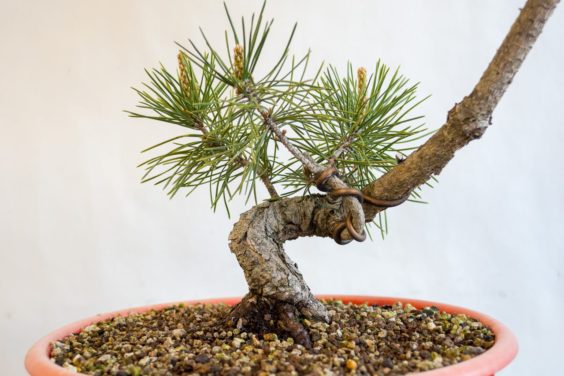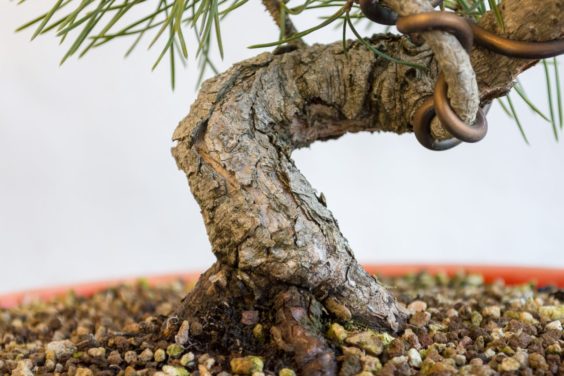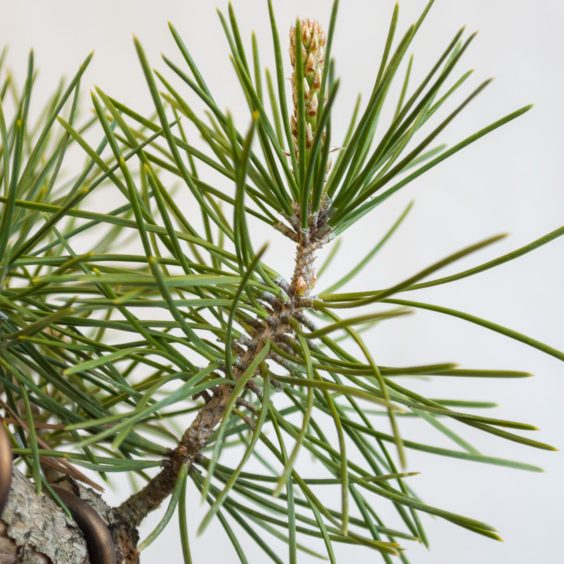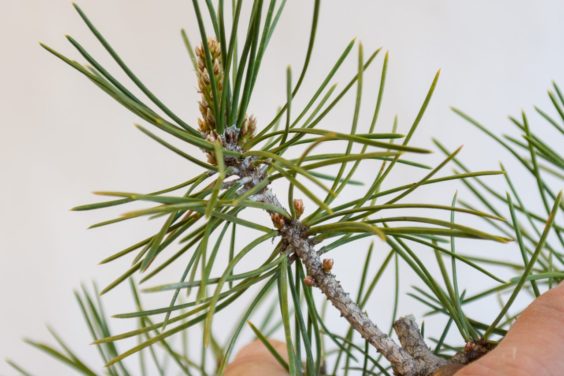Few trees in my garden better demonstrate the use of sacrifice branches than the pine below.
Black pine – six-years-old from seedling-cutting
The large branch that grows up and to the right is the sacrifice branch. The small tree at the base of this branch is the future bonsai.
The future bonsai
As I noted a few weeks ago, the definition of a sacrifice branch is simple: any branch used to achieve development goals that is not part of the final design. The most common reasons to use sacrifice branches are to thicken a section of the trunk or to close a large wound.
In the case of the pine pictured here, the goal of the sacrifice branch is to thicken the trunk.
Close-up of the trunk
The plan is to leave the sacrifice branch in place for a few more years until the lower section of the trunk reaches the desired thickness. In the meantime, I’ll encourage as much growth as possible on the sacrifice branch while maintaining the health of the lower branches that will be part of the future bonsai.
This is often easier said than done. Because the tree invests most of its resources in the sacrifice branch, the growth below is often weak.
The branch in the photo below is a good example of this. The top needles grew in 2017, the middle needles in 2016 and the lowest needles in 2015.
Three years of needles
As long as these needles stay healthy, I can create back buds with relative ease. If they brown out and fall off, I’ll need to graft if I want branches in that area.
How to keep these lower branches healthy? The main way is to occasionally reduce growth on the sacrifice branch to ensure the lower growth receives good sunlight. Not pruning, thinning, or decandling the lower branches can also help keep them healthy.
The pine pictured here appears to have a good ability to produce back buds. Looking closely at the lower branches reveals small buds that appear right where buds appear after decandling – just above the previous year’s growth. What’s interesting, in this case, is that these buds are growing in the zones just past needles that developed in 2015, and in the photo below, 2014! Even though the needles that developed in 2014 are long gone, new buds are appearing right where I’d expect them to grow had I decandled the tree three years ago.
Unprompted – and welcome – adventitious buds
These back buds aren’t uncommon on healthy, young pines, but I can’t count on them appearing when I need them so I try to preserve as many old needles as possible. There’s a good chance that this branch will become a sacrifice branch itself after I remove the current sacrifice branch, in which case these back buds may come in handy.
The post Bonsai Development Series #6: Sacrifice branch basics appeared first on Bonsai Tonight.





